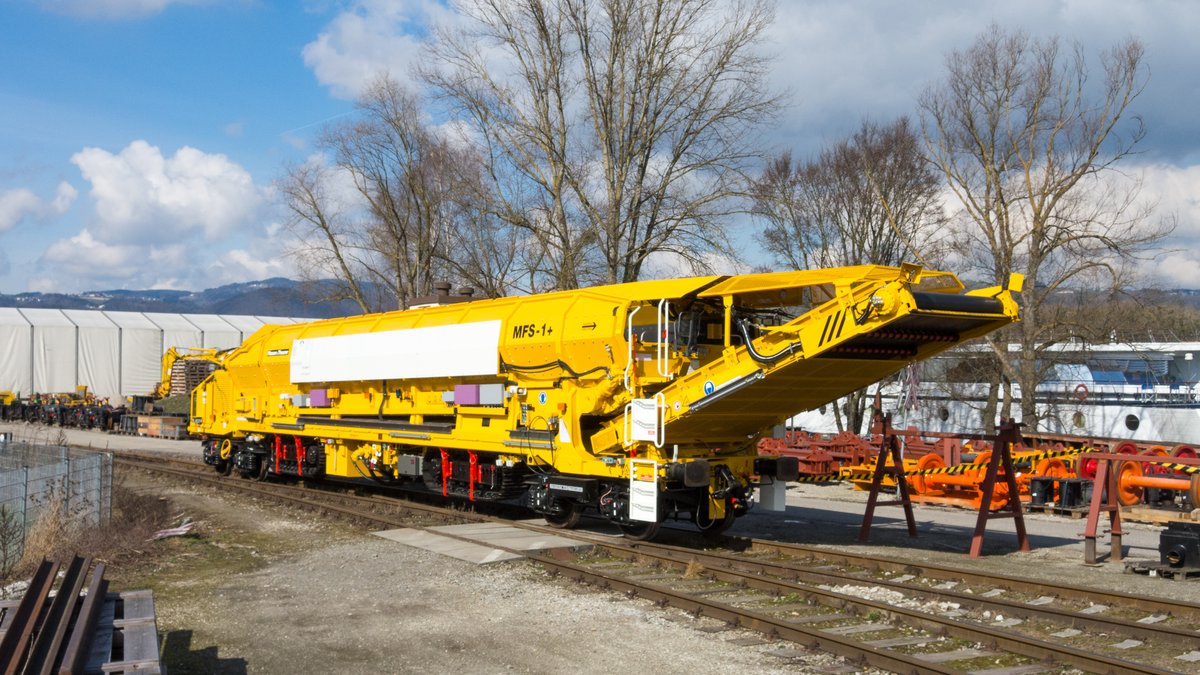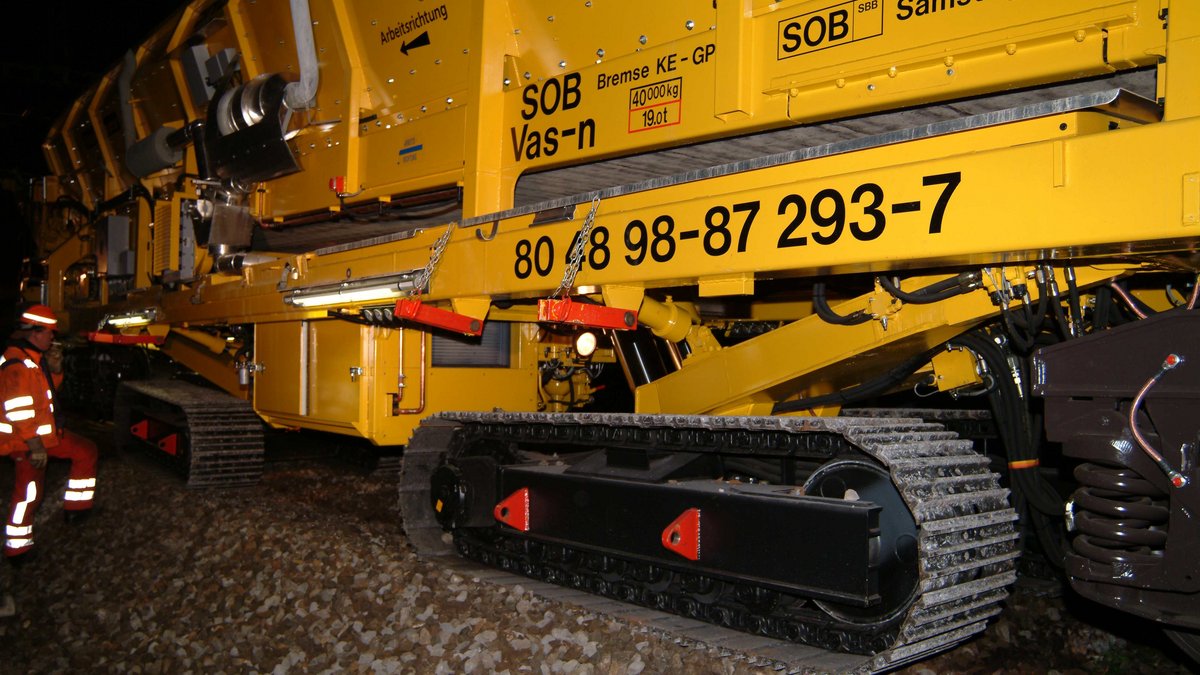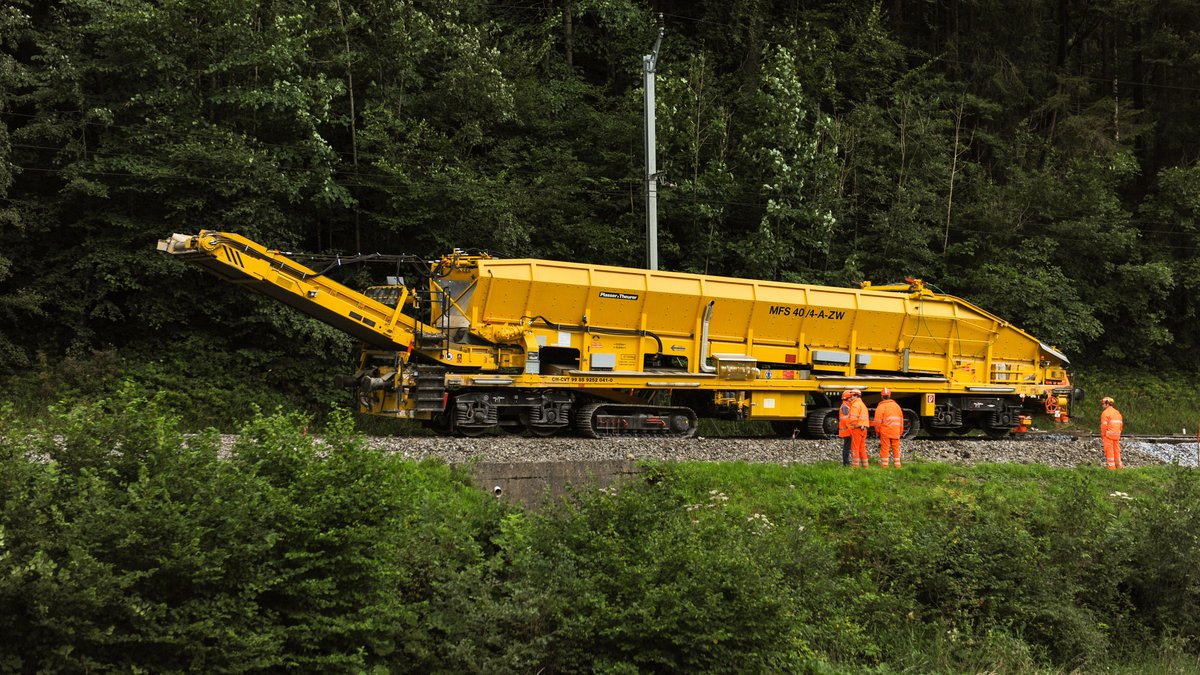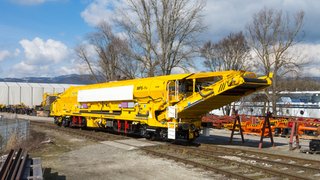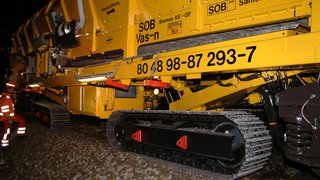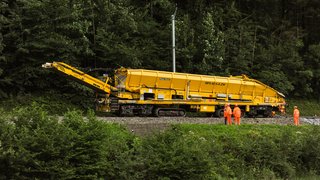In working mode, the material conveying and hopper wagon MFS + can be coupled with various other MFS wagons of a similar design. It is used for continuous conveying and storing, as well as for subsequent transportation of the excavated material. It can be used in the forward working direction to discharge ballast, waste material and other material ready for conveyance.
The MFS consists of a machine frame with draw and buffing gear fitted on both ends, an emergency control desk in the front area, a hopper equipped with a hopper conveyor belt on the inside, as well as a transfer conveyor belt mounted in front of the hopper, 2 two-axle idling bogies and two crawler undercarriages.
The two crawler undercarriages enable the MFS to move independently on the ballast bed or track formation, even if no track is available, and to be filled from the site excavation.
The MFS is a standard vehicle and can therefore be included in train formations as required, provided it is equipped with a match wagon with a support for the projecting swivelling conveyor belt.
The hopper conveyor conveys loaded material down the line or accumulates it.
The transfer belt transfers the loaded material to another MFS or discharges it.
Any number of MFS wagons can be used for storage purposes; in this case the MFS wagons are lined up and the loading process begins in the first wagon, while the others serve as conveyor line.
When the MFS at the front has been filled, its conveyor belt is switched off and the loading procedure is continued with the next MFS wagon in line.
Once several MFS wagons have been filled, they can be uncoupled and transferred to a discharging place, while the others continue to be charged.
Therefore, there is no need for the working process to be interrupted.
After the unloaded MFS wagons have been coupled again, the material meanwhile accumulated in the remaining MFS wagons can be transferred into the empty MFS wagons without interrupting the working process.
The two crawler undercarriages enable the MFS to enter an excavation pit, to take up material from an excavator and to drive independently to MFS wagons that are supported on bogies on the track. The transfer belt allows the material that the MFS has taken up from the excavated pit to be transferred and conveyed onto other MFS wagons that have been coupled to one another, to be stored, removed and discharged.
Therefore, there is no need for the working process to be interrupted. Every wagon is equipped with its own energy supply unit ensuring their individual, independent operation. The diesel engine exhaust system is equipped with a fuel particulate filtering system, enabling the machine to be operated under working conditions that require low emission fuel engines, for example in residential areas, enclosed spaces, tunnels, etc.
